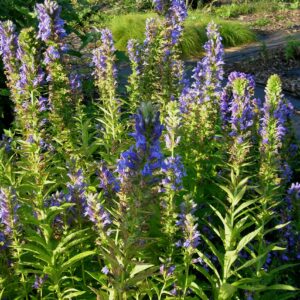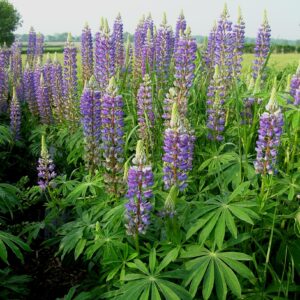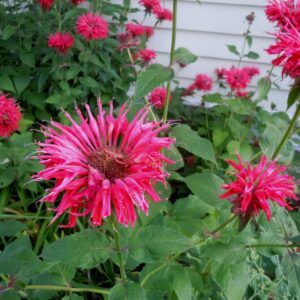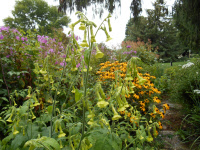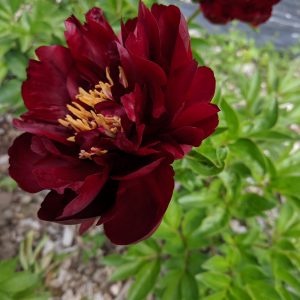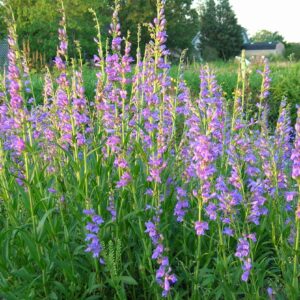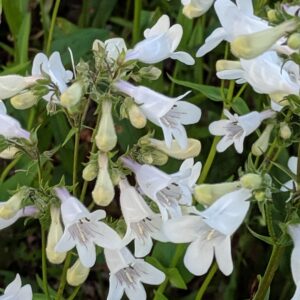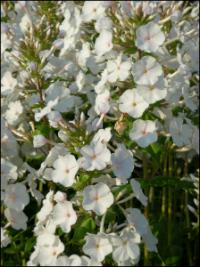Plants for Hummingbirds
Showing 49–56 of 78 results
-
Lobelia siphilitica Great lobelia Z 4-9
A striking, erect spike of sky to blueberry-blue blossoms. On top club-shaped buds, below trumpet-shapes, open flowers, made of a tube flaring open with the bottom divided into three, each segment pointed at the ends. From late summer to early fall.
A striking, erect spike of sky to blueberry-blue blossoms. On top club-shaped buds, below trumpet-shapes, open flowers, made of a tube flaring open with the bottom divided into three, each segment pointed at the ends. From late summer to early fall.
Size: 3' x 12"
Care: Full sun to part shade in moist to moist well-drained soil
Native: Connecticut to Wyoming, south to Texas then east to Georgia and all states in between, Wisconsin native.
Wildlife Value: attracts bumble bees, hummingbirds and some butterfliesLobelia is named for Matthias L’Obel (1538-1616) a French expatriate who emigrated to England and became physician to English King James I. Cherokee used the root to treat headaches, stomachaches, worms, nosebleeds, colds and syphilis. 1st collected by Rev. John Banister who moved to colonial Virginia in 1678. A gunman mistakenly shot and killed him while he collected plants. In 1749 Swedish botanist Peter Kalm wrote that Indians used five species of Lobelia to cure venereal disease, having “an infallible art of curing it.” According to John Bartram (1699-17760) “The learned Pehr Kalm (who gained the Knowledge of it from Colonel Johnson, who learned it of the Indians, who, after great Rewards bestowed on several of them, revealed the Secret to him) saith, That the Roots of this Plant cureth the Pox much more perfectly and easily than any mercurial Preparations, and is generally used by the Canada Indians, for the Cure of themselves“ (Better than mercury!) Oneidas considered this good medicine for distemper. Sioux treated bloat, diarrhea and dysentery as well as a love charm by adding powdered root to the food of the intended. Offered for sale in Bartram Garden’s 1783 Broadside, America’s 1st plant catalog.
-
Lupinus perennis Sun-dial lupin, Old maid’s bonnet, wild pea Z. 4-9
Many flowered blue, pea flowered raceme May-June
Many flowered blue, pea flowered raceme May-June
Size: 1-2' x 12"
Care: full sun in well drained soil. A legume, so it enriches the soil by adding nitrogen.
Native: Maine to FL, Ontario to MN to Louisiana, Wisconsin native.
Wildlife Value: Attracts both hummingbirds and butterflies. The only food for larvae of endangered species, Karner Blue butterfly.Lupinus is Latin from Lupus meaning “wolf.” Likely sent from its native Virginia to England by Tradescant the Younger in 1637. Certainly collected by Frenchman Michaux, who scoured eastern North American over 11 years in late 1700’s. Grown by Jefferson. Grown at America’s 1st botanic garden, Elgin Botanic Garden 1811.The Cherokee used this to stop bleeding. The Menominee fattened their horses with this Lupin and made them spirited. They rubbed the plant on themselves to give power to control the horses.
-
Monarda didyma ‘Cambridge Scarlet’ Beebalm Z 4-9
Whorls of scarlet tubes & bracts looking like fireworks, in summer
Whorls of scarlet tubes & bracts looking like fireworks, in summer
Size: 3-4' x spreading
Care: sun to part shade in well-drained soil.
Native: N. E. America
Wildlife Value: Checkered white, Fritillary and Melissa blue butterflies relish Beebalm’s nectar.Cherokee used the species medicinally, to cure colic, flatulence, nosebleed, measles, flu, hysteria and to induce restful sleep. Monarda was named in honor of Nicholas Monardes (1493-1588), a Spanish botanist who wrote about plants of the New World. Discovered by John Bartram (1699-1777) being used by colonists in Oswego N.Y. to make tea. Oswego Indians taught the colonists how to make tea from the dried leaves. Bartram sent this Beebalm to Peter Collinson in England in whose garden it grew in 1744. By 1757 its English availability was “nearly universal” among gardeners. During the American Revolution used as a substitute for tea. Grown at America’s 1st botanic garden, Elgin Botanic Garden 1811.This cultivar ‘Cambridge Scarlet’ recommended by Gertrude Jekyll in 1908.
-
Nicotiana langsdorffii Langsdorff’s tobacco Z 10-11, grow as annual in colder areas
Pendulous Granny Smith apple colored, tube-shaped flowers in summer through fall.
Pendulous Granny Smith apple colored, tube-shaped flowers, in summer through fall.
Size: 2-3’ x 6”
Care: full sun to part shade in well-drained soil
Native: Chile and Brazil
Wildlife Value: attract hummingbirds
Awards: England’s Royal Horticultural Society Award of Merit.Nicotiana langsdorfii introduced in 1819. The genus name nicotiana named after John Nicot who introduced smoking tobacco to Europe. Langsdorfii named to honor Russian naturalist Georg Heinrich von Langsdorff, Baron de Langsdorff ( 1774 -1852), Russian consul general in Brazil and leader of Langsdorff Expedition of Brazil, 1826-1829.
-
Paeonia lactiflora Buckeye Belle Z 3-8
Semi-double, velvety blossoms of the deepest red, almost chocolate, with large outer petals surrounding narrow inner petals sprinkled with sparkling golden staminodes.
Semi-double, velvety blossoms of the deepest red, almost chocolate, with large outer petals surrounding narrow inner petals sprinkled with sparkling golden staminodes.
Size: 18-24” x 24-30”
Care: Full sun or part shade in most, well-drained soil
Wildlife Value: Deer and Rabbit resistant, attracts butterflies & hummingbirds, great cut flower
Awards: American Peony Society Gold Medal, American Peony Society Award for Landscape MeritHybridized in the USA in 1956 by Walter Mains
-
Penstemon strictus Rocky Mountain penstemon Z 3-8
Spikes of deep purplish-red bells in summer
Spikes of deep purplish-red bells in summer.
Size: 30" x 24"
Care: Full sun in well-drained soil. Drought tolerant
Native: Wyoming to Arizona
Wildlife Value: feeds bees, hummingbirds and butterfliesPenstemon is named for its five stamens, penta meaning five and stemon meaning stamen in Greek. Strictus means “erect.” This species collected by explorer, military officer and politician John C Fremont (1813-1890) and described in 1846.
-
Penstemon tubaeflorus Great Plains Beardtongue 4-8
Spikes of swan white trumpets with flared ends blooms in early summer. One of most reliable, long lived penstemons.
Spikes of swan white trumpets with flared ends blooms in early summer. One of most reliable, long lived penstemons.
Size: 2-3’x 15”
Care: Sun in well-drained to moist well-drained soil
Native: Central Plains N., S. to TX & NE to Maine, Wisconsin native
Wildlife Value: feeds Baltimore butterfly, other butterflies, bees and hummingbirdsPenstemon is named for its five stamens, penta meaning five and stemon meaning stamen in Greek. Collected by English botanist Thomas Nuttall (1786-1859) who searched entire No. American continent – parts of Canada, from New England west to Oregon, parts of the South, Midwest, the Plains, the S.E., California & Hawaii, finding hundreds of new plants.
-
Phlox carolina ‘Miss Lingard’ Carolina phlox, Wedding phlox Z 5-8
True to its common name this 3’ tall selection bears bridal white blossoms with pink eyes late June into August with deadheading.
True to its common name this 3’ tall selection bears bridal white blossoms with pink eyes late June into August with deadheading.
Size: 3-4' x 18"
Care: sun to part shade in moist to moist well-drained soil. Powdery mildew resistant
Native: Cultivar of native in eastern and central U.S.
Wildlife Value: attracts butterflies and hummingbirdsPhlox is Greek meaning “flame.” The species carolina in gardens before 1889 and cultivar ‘Miss Lingard’ before 1905.

